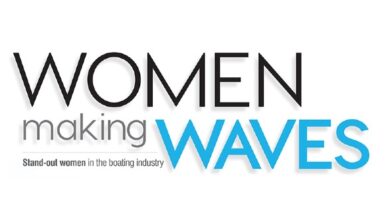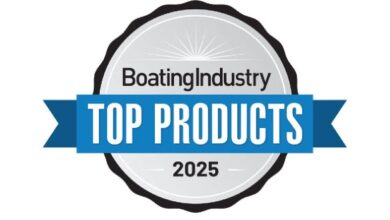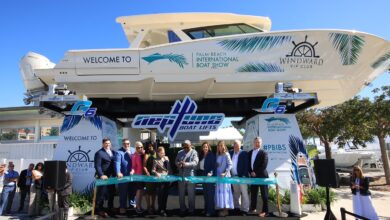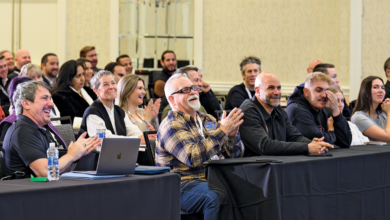Water sports attract young buyers and appeal to current consumers
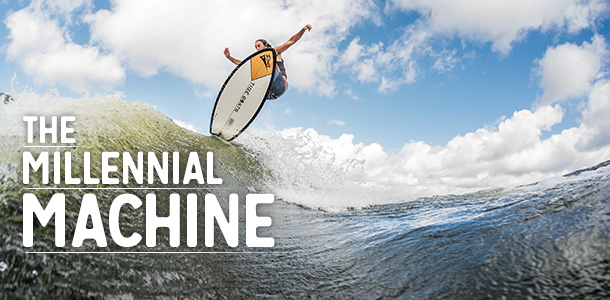
It’s been another good year for the tow boat segment. According to data from Info-Link, sales of inboard boats were up over 10 percent year-over-year. Most manufacturers feel extremely confident about their future.
And why shouldn’t they? They’ve been able to achieve something the whole industry is aiming to accomplish: attract Millennials. The average age of inboard boat buyers was 49.1 in 2014, down marginally from 49.7 in 2013, according to Info-Link data.
In an era when many categories have continued to steadily increase in age, what makes this segment so special?
To some, the simple act of awareness has brought new boaters to the market.
“On a national level, I think that the whole Discover Boating campaign has done a good job of educating and making people aware of water sports,” said Jack Springer, CEO of Malibu Boats. “I think we have a very active population, and that’s becoming more so, and so as they understand what all you can do on the water, I think they’re starting to embrace [water sports].”
To others, the answer is reimagining the target audience by identifying the true driver of the sale.
“When we look internally at what our average age of the customer is, we talk often about the fact that sometimes the influencer or the decision maker may not actually be the person that’s buying the boat,” said Greg Meloon, president of Nautique Boat Company. “It may be a 14- to 20-year-old that’s helping a parent or grandparent make a decision on what the best boat to buy is, and so we are a little bit undefined in the sense of who our true customer is, who’s making the purchase decision versus who the person is that the boat’s registered underneath.”
But most manufacturers agree that it boils down to something much simpler: The water sports segment is much more in tune with the needs of young buyers by way of affordability.
“People will pay for things, regardless of the price point, when it delivers on the value that we’re trying to tailor to what they need. So the key to a price-point boat isn’t just getting the price down – it’s that it delivers and it can do everything that they want it to do, and they’re not compromising a lifestyle or an ideal on the water in order to get into the product,” said Daniel Gutierrez, director of design and marketing at Tige Boats.
Tige’s R-Series is targeted to offer a complete value to those consumers without compromising how they plan to use the boat – it just might not be quite as elaborate as the high end of the line.
‘There’s no compromise there in order to get into it at a price-point. Sure, we take away some of the French seams and the stitching, and we don’t have as many variations in vinyl,” said Gutierrez, “but yet if that’s OK with you, you come out and you get a great surf system, a great ballast system, a great audio system, a standard cruise control and things like that.”
An influx of new products that are value-driven has led to an increase in sales and an effective lowering of the average boat buyer age.
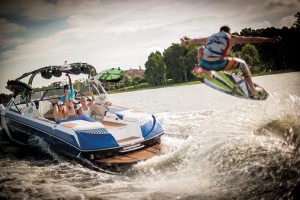
“When you subsegment the inboard ski tow sports marketplace … to what some people would call price-point or entry-level for especially Millennials, that’s where we’re targeting our product: [people] who may not have the financial capability to afford one of the full-blown tow sports boats that can get rather expensive,” said Jay Povlin, vice president of global sales and marketing at MasterCraft Boat Company. “When you look at that subsegment, that is a very fast-growing subsegment of the overall inboard ski boat marketplace.”
As MasterCraft launched the NXT 20 and 22 over the past year, it has focused its attention toward those entry-level buyers and anecdotal evidence from its dealers suggests it is working, as many report younger buyers visiting the dealership and inquiring specifically about the MasterCraft product line.
“If you look at the way we positioned [the NXT 20 and 22] from a marketing launch perspective, we were very avant garde, you could say, in terms of the videos we produced and the photography that we used, but it was designed very specifically to pique the interest of those Millennials because they follow guys like Travis Pastrana, Parks Bonifay, the Godfrey clan,” said Povlin.
That loyalty helps drive sales for a boater’s life cycle in a specific brand. MasterCraft aims to create a trajectory for customers to move down the line after buying that price-point boat and continue with the recreation as they gain more income.
In order to fuel that trajectory, MasterCraft has also continued building larger boats as well. Povlin said bigger boats are also growing in popularity for the segment.
“In general, the macro sales view implies a larger boat being bought and that would also imply a more expensive boat as well being sold,” Povlin said.
Those customers are still buying boats, and plenty of them. Tige’s average customer leans around 46 years old, has two children and makes an average of $300,000 a year.
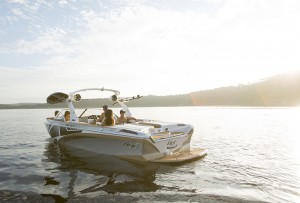
“There’s a certain level of success that you have to have to jump into our product market,” said Gutierrez. “We make an expensive boat and our entire industry is the super car industry. We’re from Corvette to Lamborghini to Ferrari of boats on the water, just short of offshore and yachts, so with us being that it is a hand-built product, it is a premium product. Nobody sacrifices on the high end of things in the components that they put into the product.”
This mindset also helps fuel how manufacturers effectively target the younger buyers – by being realistic about their means and desires.
“I think our market is aware, and Tige as a company is aware too, of the younger, maybe upper 20s but [mainly] mid 30s buyer that’s trying to get into this market and would rather buy a new price-point boat rather than a used one,” said Gutierrez. “It’s wholly based on what they can get their payment down to.”
It’s also important for manufacturers to be realistic about how their consumers are using the boats and what gets them on the water as often as possible. To that end, manufacturers are trending toward convenience. Tige’s TAPS3 system was designed to provide a high-quality wave but allows users to do so with a smaller time investment.
“Some people don’t have the time to go out and spend the day on the water. They don’t have the time to put in a super bunch of loaded weight and dial in the wave to be the biggest thing they’ve ever seen and replicate a smaller ocean-like experience,” said Gutierrez. “When those time constraints come into play, that convenience becomes overwhelmingly more important than the time it takes to go the traditional way and make the biggest wave. So we’re just trying to strike that balance between the two.”
Surf’s up
As sales continue to stay up, so does the wakesurfing phenomenon, and it does not appear to be a passing fad.
Wakesurfing is more social in nature than other water sports, and its low impact allows users of varying age and skill to participate.
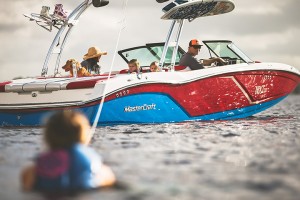
“We’ve got little kids that are up surfing right away because it’s a low impact. We’ve got the grandfathers and grandmothers surfing with their grandchildren behind the boat,” said Povlin. “You can have fun whether you’re holding the rope, not holding the rope or doing it with somebody else. It’s just a lot of fun and that’s what’s driving a lot of the interest in this segment.”
“What’s amazing to me is that wakesurfing has influenced towed water sports I want to say even more than wakeboarding. And the reason I say that is that I have never seen boat manufacturers spend as much money as they are spending right now on wakesurfing,” said Larry Meddock, chairman of the Water Sports Industry Association. “It all of a sudden became this universal activity that has no impact on the body, it has no bindings to deal with, it’s done slow, it’s still social and it has absolutely taken off.”
Wakesurfing has been so influential that is has caused manufacturers who were not otherwise engaging in the water sports segment to enter the playing field. The biggest of which, of course, is Volvo Penta. The company released its FWD sterndrive engine to the market at the Miami International Boat Show in February.
“For a boat company to completely change its drive unit just to capture some wakesurf market to me is very telling that this is really something unique and special,” said Meddock. “Five new boat brands are going to be exhibiting at Surf Expo, all in the wake section, all with FWD drive, all because of wakesurfing.”
Even accessories manufacturers can see the trend. As wakesurfing has grown in popularity, so has the demand for towers. Marine Accessories Corporation, parent company of Monster Tower, XTreme Tower Products and Great Lakes Boat Top Company, used to have an option rate with an OEM of 20 percent for wakeboard towers, but that number has now risen to 70 percent.
“We think wakeboard towers have really gone more mainstream in boats these days. Anybody that’s on the lake, all you’ve got to do is look around and you’re going to see a lot of wakeboard towers on boats, either OEM or aftermarket,” said Rick Reyenger, CEO of Marine Accessories Corporation. “The whole aftermarket segment, as towers have grown in popularity, has really exploded over the last eight or nine years. People just like the looks of towers and they see them on new boats, so naturally they want them on their older boat.”
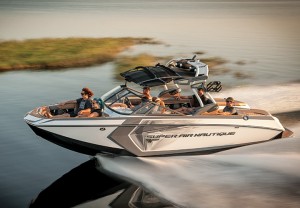
The popularity of wakesurfing caused Nautique to redesign the hull of its G-series boats. When the G-series was launched three years ago, the goal was to build the ultimate wakeboard boat. With the shift in consumer demand to wakesurfing, Nautique undertook significant product development to put as much energy into designing the perfect wakesurf wave as it had done with the wakeboard wake.
The original G-series was designed so that the rear corners of each side of the boat on the transom are engaged in the water during wakesurfing and are completely free of the water during wakeboarding. As Nautique developed new boats, the company has looked at new ways to integrate the way the water is flowing around the hull with the Nautique Surf System to get the maximum from both systems.
“That gave us the entire area of the boat to work on shaping the wakesurf wave and optimizing it for the load of the boat and also for the Nautique Surf System, which had been introduced two years prior,” said Meloon, who added that having the Nautique Surf System adapted in allows for clean installation of the transom of the boat. “It maximizes the wave that we can get by reducing the amount of lift we have at wakesurf speed so that the boat and factory ballast creates a bigger wave that what you could get in the past, and it brings the wave together the way it interacts all the way around the boat so that it’s cleaner, provides a better platform for surfing from beginners all the way to the advanced pro.”
(Read more about the new G-series boats at BoatingIndustry.com/NautiqueGSeries)
Tech control
With the popularity of wakesurfing has come new technology to appease the rider. One of the most significant technological advancements has been wakesurfing remote controls that allow the user to shape his or her own wake.
Tige introduced the Surf Link Remote in September 2014, which was an industry first at the time. With a click of a button, users could use the remote to adjust the shape, style, length and height of their surf wave.
“We were the first ones to give the rider control of the surf wave behind the boat,” said Gutierrez.
Since then, several manufacturers have come out with their own versions. Nautique released the Nautique Surf Select with its new G-series boats and released an app for Pebble Watch, a waterproof smart watch. The app allows surfers to control different aspects of the boat and provides real feedback from the helm. Surfers can also control stereo volume, skip tracks and choose to switch from one side of the wave to the other immediately or after a three-second countdown.
“That allows more of a beginning surfer to press the button, get ready to make the change and know when the boat is going to switch so they can be in the right place to make the transition,” said Meloon.
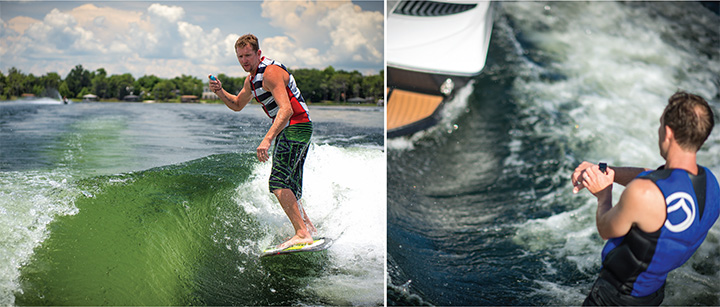
Malibu Boats also introduced the Surf Band Remote Wave Control, which has patents and IPs behind it. The rider-controlled surfing band acts as an athletic wrist watch and allows the rider to control settings, alerting the driver to any changes.
“Now you’re taking something that used to be in the driver’s hands that’s now in the rider’s hands, and so he can control every aspect of his surfing wave,” said Springer.
Malibu has stayed on top of other technologies that are appealing to today’s water sports consumer. For instance, the company released a rearview camera at IBEX this year. The camera allows drivers to see what’s behind them when docking or if they lose a rider.
“Today, many of the things that you see on a car you now find on boats,” said Springer. “A lot of the new technology that is being introduced is causing people to say ‘My boat is antiquated, I’m going to buy a new boat.’”
Malibu also introduced the Viper 2 control system to its boats in 2014, which is a soft-coated system that can be updated. Boaters can now put a thumb drive into the system and update the software with any new changes or features Malibu has added.
“We have a platform that we’re adding to each year, and what our hope is it causes people to either get into the sport or it causes people who have bought a boat three to five years ago to say ‘They’ve added so much new technology, I need to upgrade,’” said Springer. “If a person has a boat from 2008, 2009 or 2010, it’s not even near the same boat that is out there today and the progression of Malibu and the inboard segment is making it very appealing for people who before would have never even considered it.”
A social sport
Wakesurfing’s popularity is largely attributed to how social the activity allows riders to be: Riders are closer to the boat and the extra weight of multiple people is beneficial not only for the crowd of friends who watch a rider show off his or her skills, but for achieving a maximum wave.
It’s not surprising then that the water sports segment takes a social approach to marketing its products.
Nautique took this concept to heart with the release of the G-series, which was done with a release party and a live webcast for Internet users.
“We looked at it in a way to say ‘Let’s get a group of customers [together who are] excited about our Nautique product and show them what’s new, build that excitement and let that spread throughout the world,” said Meloon. “We reached customers that hadn’t been in our fold before.”
Marine Accessories Corporation has ramped up its own social media efforts through video contests, offering rendezvous with customers to get them socially together on the water and more.
“We’re trying to actually build a community out there through our social media efforts and our following with our Monster Towers,” said Reyenger.
For Tige, social media is an area where the company is very aggressive and aims to have a large impact because of its ability to build the brand up in the long term with a younger demographic, which Gutierrez says helps the industry grow that fan base from the very beginning.
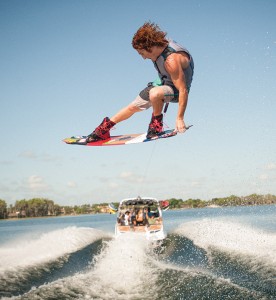
“We tailor our message to those different areas of social media and those different demographics to start the long-term plan to build a culture and to build a following so that people can identify with who we are as a brand,” Gutierrez said.
Sterndrives making a splash?
Sterndrive boats have not recovered from the recession quite as quickly as other industries: Sales of sterndrive boats are down about 10 percent year-over-year while every other category was up.
Manufacturers are aware of the category’s challenges and are looking for new ways to help sterndrives make a comeback. With the intense popularity of wakesurfing, these manufacturers are looking to toss their hat into the water sports ring.
In February, Volvo Penta released its FWD Drive. By combining a sterndrive engine, DuoPros and Volvo Penta’s Inboard Performance System, the company was able to create a forward-facing DuoProp drive that moves the prop more than 27 inches forward under the boat.
“FWD opens the way for boat builders to create multi-use craft that can be optimized for cruising, wakesurfing, as well as swimming, waterskiing and just generally having a good time with family and friends,” said Ron Huibers, president of Volvo Penta of the Americas.
Regal, Cobalt, Four Winns and Bryant Boats were Volvo Penta’s launch partners for the engine and all four companies brought their new FWD models to the market this year.
Read more about the implementation of some of those models at BoatingIndustry.com/VolvoPentaFWD.
Meddock said having the number of sterndrive-powered boats that exhibited at Surf Expo this year was “huge” for the world of towed sports and sees the new entries in the segment as a good thing for water sports overall.
“The I/O business is just dying and we’re not. We’re growing,” said Meddock. “FWD Drive, thanks to Volvo, is going to eliminate the stigma of danger of wakesurfing behind a traditional I/O.”
However, inboard manufacturers are skeptical. They don’t see sterndrive boats as competition with their products; they still believe the clean trailing edge of the back of an inboard boat, as well as the direct drive propulsion, provide a huge advantage for customers. Inboard boats also have the advantage of years of research and development behind their products.
“There’s going to be the ability to surf behind the I/Os for sure, but the quality of the wave they’re putting out, I’m anxious to see what their end result truly is,” said Gutierrez. “I’m not trying to have any negatives on them at all, but I’m really curious to see what they consider a quality wave versus the ones that our industry’s producing. There are a lot of variables involved.”
Springer said inboard boats can do just about anything a sterndrive can do, but the competitive advantage is advanced water sports activity.
“If you’re anything more than just a basic, bare beginner and you want a good wakeboard wake or a wakesurf wave or a good ski wake,” said Springer, “then you’re going to have that inboard [engine] for that.”
Meloon said the amount of control with speed, the way the boat handles and planes and more all give inboards an advantage, as well.
“It becomes pretty clear when you start to look at how the boat operates and you demo it on the water that a true V-drive or inboard drive has significant advantages still over an I/O,” said Meloon, “when it comes to a true water sports boat.”
Accessories trend toward coverage, color integration
Marine Accessories Corporation is the parent company of Monster Tower, XTreme Tower Products and Great Lakes Boat Top Company. Based on trends in water sports, the company saw an opportunity to integrate its bimini products with its wakeboard towers.
The Flip Bimini, a bimini top that attaches to a wakeboard tower, released at IBEX this year. The bimini goes over the top of the tower and operates on a mechanism where customers pull two knobs and the top flips forward and deploys down. The bimini can be mounted and booted against the tower when it’s undeployed. The Flip Bimini will be sold through both Great Lakes Boat Top Company and XTreme Towers.
Biminis on wakeboard towers are a huge trend Reyenger said is appearing in the water sports segment, but that Marine Accessories Corporation is putting its bimini tops over the towers whereas other companies have placed them underneath, which interferes with speaker mounts, lights bars and any other accessories consumers may
want on the tower.
“In today’s market, people just want coverage,” said Reyenger, “[and] you want to have clearance of your tow rope from the bimini top. We designed them especially for our towers, and I would say today that, especially with our packages, probably 80 percent of the Monster Towers that we sell are going with bimini tops on them.”
Reyenger added that whenever the company designs a new tower for an OEM, the company works together with the OEM to create a design that looks like the bimini is a part of the tower.
“They’re integrated into the tower, it’s not just an afterthought for us,” said Reyenger.
Integration is a key aspect to the design of wakeboard towers. Marine Accessories Corporation is finding that color-matched products are extremely appealing to consumers, and so the company invested heavily in powder coat operation this year, which gives Marine Accessories Corporation the control and ability to offer its customers different color options that match gelcoats in their vessels. The company is also integrating new materials, such as fiberglass and upholstered panels, that match gelcoats and boat colors.
“It really kind of integrates more with the boat in terms of the way it looks, the way it feels. The people on the inside of a boat looking at the inside of a tower can now see an upholstered kind of look like they see in the rest of their boat,” said Reyenger.
For more information about integration and other trends in boat interiors, read our Market Focus article here.

